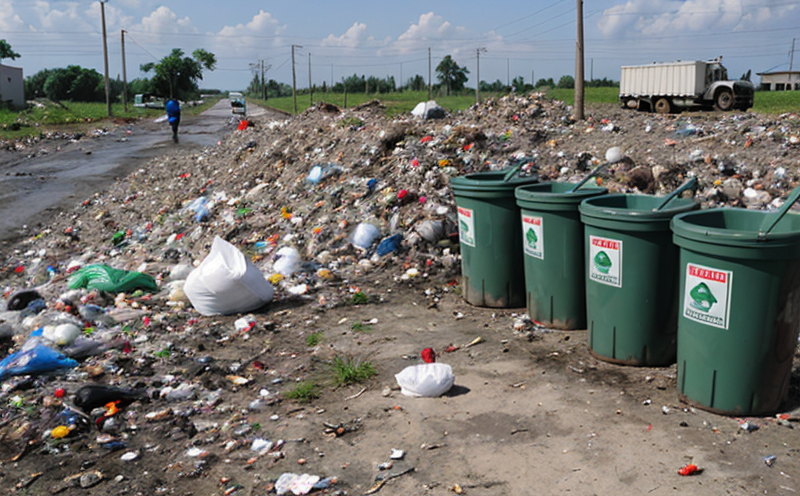EPA 1613 Dioxins and Furans in Solid Waste Test
The EPA Method 1613 is a comprehensive analytical procedure designed for the determination of dioxins and furans, including polychlorinated dibenzo-p-dioxins (PCDDs) and polychlorinated dibenzofurans (PCDFs), in solid waste matrices. This method has been widely adopted by regulatory bodies to ensure compliance with stringent environmental standards.
Regulated under the U.S. Environmental Protection Agency’s Toxic Substances Control Act (TSCA) and Resource Conservation and Recovery Act (RCRA), this test is crucial for managing hazardous waste, particularly those containing dioxin-like compounds. The method involves several key steps: sample preparation, extraction of target analytes, cleanup using column chromatography, derivatization, and finally, analysis by high-resolution gas chromatography with tandem mass spectrometry (HRGC/MS/MS).
The primary objective is to identify and quantify dioxins and furans present in solid waste materials. The test ensures accurate measurement of these compounds which are highly toxic even at trace levels. Compliance with this method helps industries avoid penalties associated with non-compliance, protect public health, and minimize environmental impact.
The EPA 1613 protocol is detailed in the official document published by the U.S. Environmental Protection Agency (EPA). This method has undergone rigorous validation to ensure reliability and reproducibility across different laboratories. The process involves strict quality control measures at every step, from sample collection to final reporting.
Understanding the significance of this test requires insight into its role in environmental protection. Dioxins and furans are known as persistent organic pollutants (POPs) due to their long-lasting presence in the environment. They accumulate in living organisms over time, leading to serious health risks including cancer, reproductive disorders, and developmental issues.
The method is applicable not only to solid waste but also to other matrices like soil and water. However, for the purposes of this discussion, we will focus on its application to solid waste. The test ensures that industries handling hazardous waste can meet regulatory requirements, thereby contributing to safer disposal practices.
Benefits
- Compliance Assurance: Ensures compliance with EPA regulations on dioxin and furan levels in solid waste.
- Risk Assessment: Provides data for assessing the risk associated with handling, transporting, or disposing of hazardous waste materials.
- Health Protection: Supports efforts to protect public health by ensuring that dioxin and furan levels are within acceptable limits.
- Sustainability: Contributes to sustainable waste management practices by identifying sources of contamination early in the process.
Why Choose This Test
The EPA 1613 test offers several advantages over other methods. Its high sensitivity and specificity make it ideal for detecting trace amounts of dioxins and furans, which are essential for accurate risk assessment.
This method is preferred by industries dealing with hazardous waste because it provides reliable data that can be used to justify disposal practices. The test ensures that only compliant materials proceed further in the supply chain or to final disposal sites.
The protocol's rigorous validation process guarantees consistent results across different laboratories, enhancing trust and reliability among stakeholders. This consistency is particularly important for regulatory compliance purposes.
Moreover, the method supports research and development by providing accurate baseline data on dioxin and furan levels in various waste streams. This information can be invaluable for improving waste management processes and developing safer disposal techniques.
Environmental and Sustainability Contributions
The EPA 1613 test plays a crucial role in environmental protection by providing accurate data on dioxin and furan levels. This information is vital for making informed decisions about waste management practices, reducing the risk of contamination, and protecting ecosystems.
By ensuring compliance with regulatory standards, this method helps prevent unauthorized disposal of hazardous materials into the environment. This contributes to maintaining clean air and water, which are essential for sustaining life on Earth.
The test supports sustainable practices by identifying early sources of contamination, enabling prompt corrective actions. It also aids in the development of safer waste management strategies that minimize environmental impact.
Through its role in regulatory compliance and risk assessment, the EPA 1613 method helps protect public health and biodiversity. It ensures that industries handle hazardous materials responsibly, contributing to a healthier planet for future generations.





